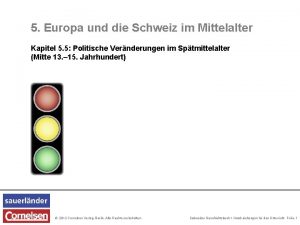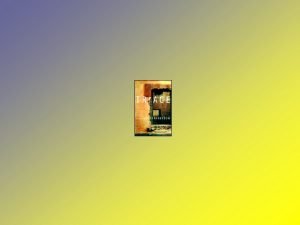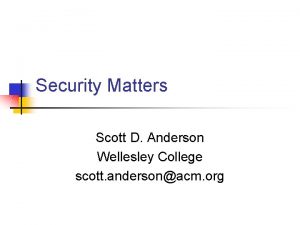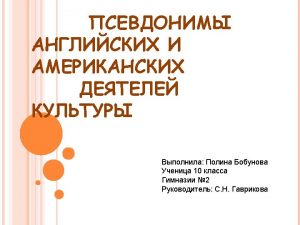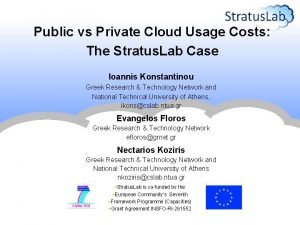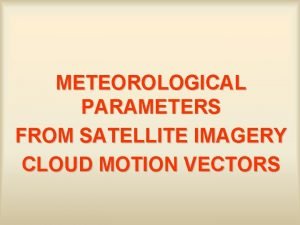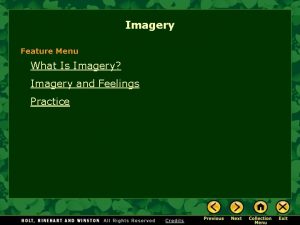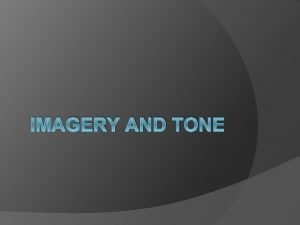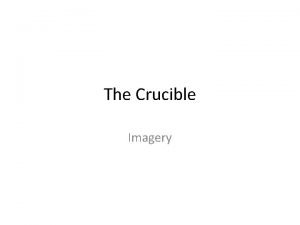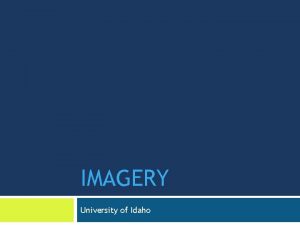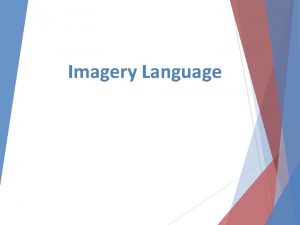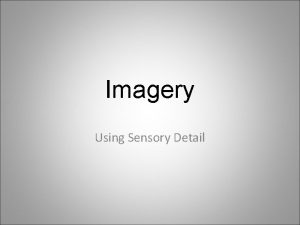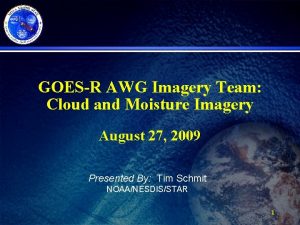Cloud Imagery and Motion Mark Anderson Scott Cornelsen










- Slides: 10

Cloud Imagery and Motion Mark Anderson, Scott Cornelsen, and Tom Wilkerson Space Dynamics Laboratory Utah State University, Logan, UT 84341 435 -797 -4679 manderson@sdl. usu. edu, scornelsen@sdl. usu. edu, tdw@sdl. usu. edu Presentation for Working Group on Space-Based Lidar Winds Bar Harbor, ME June 23 -25, 2003 Research Support: IPO, NASA, and SDL

MCP (Moving Cloud Patterns) Overview: • • • Incorporates a block matching technique to quantify cloud motion in pixels Camera lens distortion and field of view information used to convert from pixel to angular displacements Cloud height measurement needed for final velocity calculation Improvements: • • • Image subtraction to eliminate background and sun glare MCP data filtering software Automatic contrail detection (to be incorporated in near future)

Algorithm Improvement: Image Subtraction • Absolute difference between frames, along with difference threshold, are used to create a binary mask • Mask eliminates stationary objects (i. e. sun glare, etc. ) from consideration during block matching • Produces substantial improvements in cloud motion detection and measurement

MCP Output Variability • Absence of visible clouds • Low contrast of cloud features • Multiple cloud layers visible during image sequence

Analysis of MCP Output • Time Based Filtration • Distribution Based Filtration – Velocity Distribution – Direction Distribution

MCP Analysis Program • Simultaneously filter on three parameters • Automatic calculation of velocity and direction • File format preserves filter settings and user input • Plots exportable in all standard image formats • Exports final results in text file format • Increased efficiency and versatility of analysis

Utility of Contrail Analysis • Automatic detection of contrails to avoid improper analysis in sky-scanning observation. • Determination of the number of contrails present. • Identification of contrail location.

Hough Transform picks out each straight line in the image as an intersection of curves in , space y each line-point generates a Hough curve ( ) line to be identified (m, b) p/2 p Transform Space x Image Space y(x) = mx + b becomes ( ) = x cos + y sin

Contrail Detection Sequence Original Image Hough Transform Edges Detected ρ θ Detected Maximums Composite Image 3 1 ρ 4 5 6 3 2 4 θ 6 2 1 5

Summary • Notable improvement in quality of MCP measurements due to image subtraction algorithms • Efficiency and versatility of MCP output analysis improved with new software • Contrail detection identifies possible times of inaccurate analysis by other instruments
